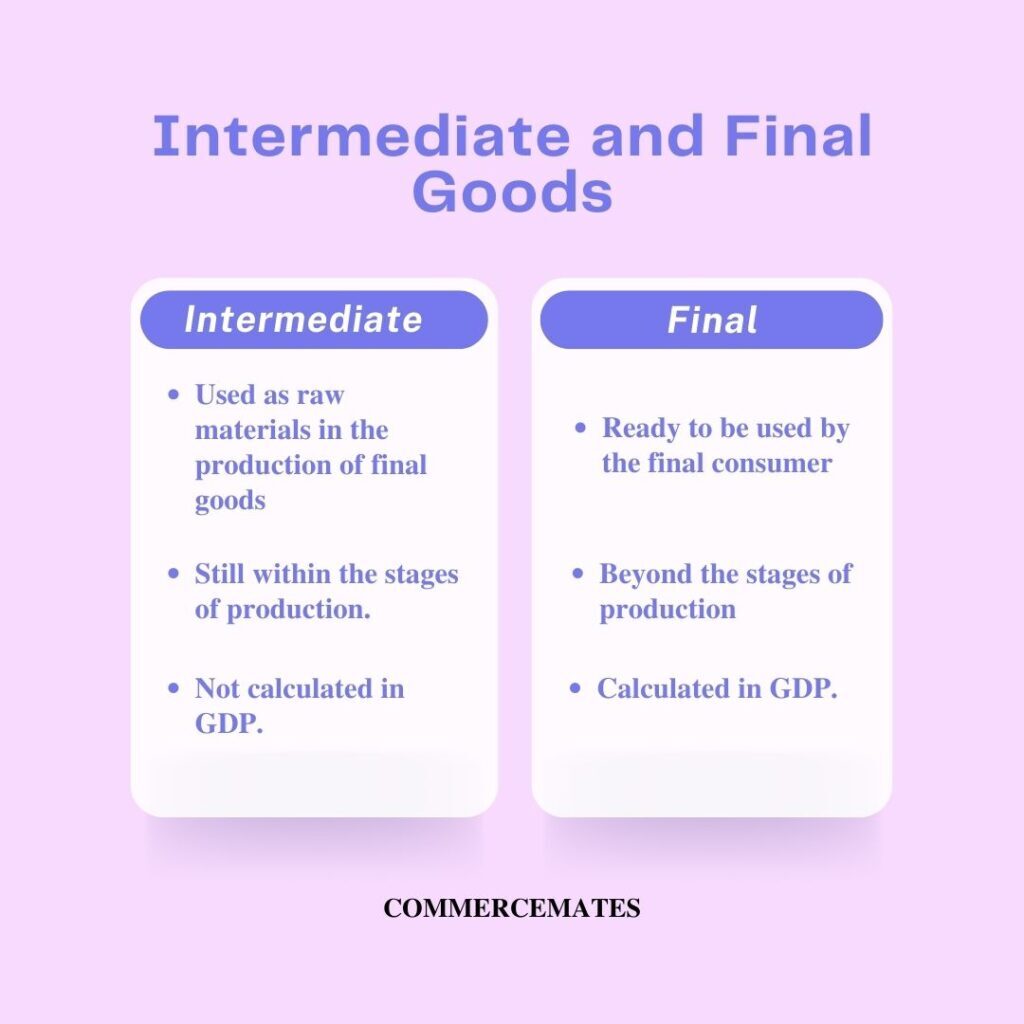Contents
Meaning of Intermediate Goods
Intermediate goods are goods used as input to create the final products sold to the consumers. They may sometimes even refer to goods converted into another kind of intermediate good to be used to build a final product. For example, milk that is used to create butter and sold to the final consumer is an intermediate good. If the same butter is passed on to a bakery to create cakes, the butter also becomes an intermediate good in this situation.
Therefore, there is no definite rule regarding which products can be intermediate. The same product can be both intermediate in one case and final good in another case.
Intermediate goods are important to the production objectives of a business. They also boost associations with other complementary industries as intermediate goods are generally resold between industries to be used in their respective processes.
They can be categorized in three ways. First, the producer of the final good may produce the intermediate goods too. Second, the goods are produced by one manufacturer but sold to another to be used in the process of creating the final goods. In the third, the intermediate good is sold to another producer to create a new form of an intermediate good.
Services can also have intermediate goods in their process. For example, the computer used to edit a video is an intermediate good. The edited final video is the final service or good.
Classification between Intermediate and Final Goods
We have discussed final goods and intermediate goods in the last section. To understand how one compares to another, factors like the end goal and the effect on GDP can be taken.

Intermediate goods are still within the stages of production, i.e., modifications will be made to those goods to get the final result. They are not ready to be used by the final consumers and are in fact used as raw material for final products. They will, thereby, be subjected to additional value addition processes. Most importantly, since these goods are not finished and ultimately lead to the final production of goods, they are not counted in the GDP of the nation.
Final goods are beyond the stages of production. No additional value-boosting processes or modifications are required to be made to these products. They are finished goods that are ready to be consumed by the final users. It is a clear indicator of economic productivity and is therefore calculated in the GDP of the nation.
Examples
Based on the three categories discussed, intermediate goods can be better understood using some examples.
A shoe manufacturer needs glue for production. They may have a special production unit just dedicated to the making of glue. This glue is the intermediate good for the final product, i.e., a shoe. Similarly, a soft drink manufacturer may not choose to produce corn syrup for its consumption. Corn syrup is an intermediate good that is produced using corn by another manufacturer.
On the other hand, an example of an intermediate good used to produce another intermediate good is the journey of cocoa beans. Cocoa beans are grown by a farmer and sent to a cocoa butter manufacturer. The cocoa beans were the intermediate goods here. The cocoa butter is now sent forward to a chocolate manufacturer and is used to create chocolates. Cocoa butter is the intermediate good in this case.
Intermediate Goods and GDP
Intermediate goods are not included in the final calculation of Gross Domestic Product (GDP). Let us understand why with an example.
Potatoes worth $15 are sold by a farmer to the general public. He also sells $15 worth of potatoes to a chips manufacturer. Ideally, the production of the economy is $30 now as that is the total value of produce contributed by the farmer. The chips manufacturer now converts those potatoes to chips and sells them at $20. This should mean that the total GDP is now at $50.
The problem with this method of measurement is the concept of double-counting. The potatoes were first sold to the public for general consumption. That makes the potatoes final goods. The potatoes that were sold to the manufacturer were intermediate goods with a value of $15. The chips manufacturer then changes the nature of those potatoes and adds a value of $5 to bring the total value of those potatoes to $20 now.
The production value of the farmer was $15 and the manufacturer was $5. Had we counted both $15 and $20, it would not show the true picture of the actual economic activity that took place. It would just count the original $15 value of potatoes twice, even though the manufacturer had no contribution to the farming process of the raw potatoes.
This is why GDP measurement methods only count the value of the final goods to avoid counting the same goods more than once. Therefore, in our example, the true GDP value would be $35 ($30 for potatoes and $5 for making potato chips).